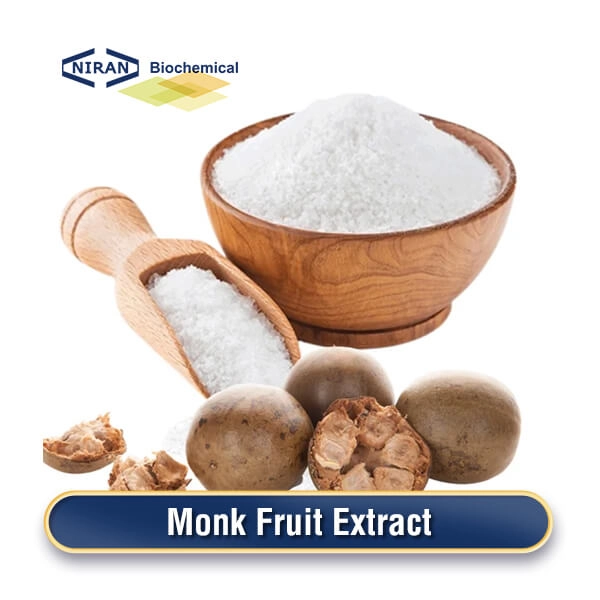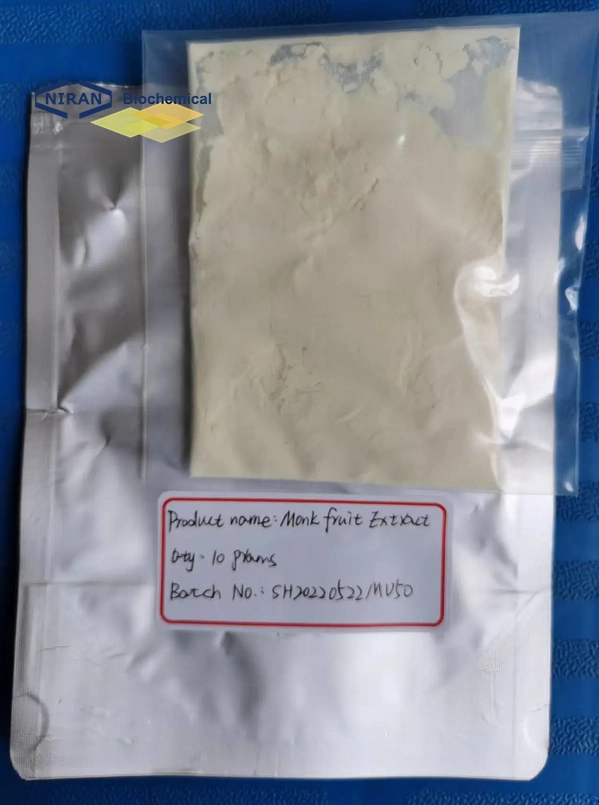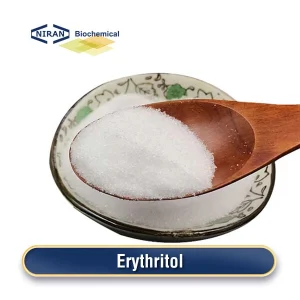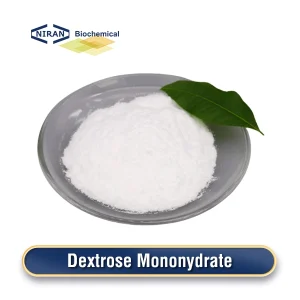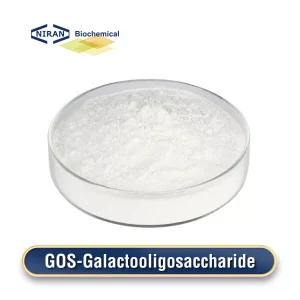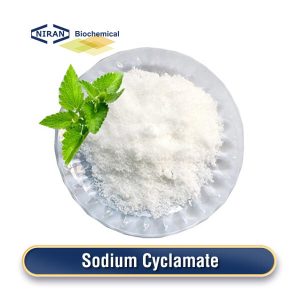Niran Biochemical
YOUR RELIABLE FOOD INGREDIENTS
Send Inquiry
Home » Products » Sweeteners » Monk Fruit Extract-Food Grade
Monk Fruit Extract-Food Grade
- CAS: 88901-36-4
- Chemical Formula:C60H102O29
- Certification: KOSHER, ISO, HALAL, FSSC22000, BRC, etc.
- Standard: USP 36
- MOQ: 1000KG
- Shelf Life: 2 Years
Inquire Product
Product Description
What is Monk Fruit Extract?
Monk fruit extract is a natural sweetener that appears as a white crystalline powder. It tastes extremely sweet, 200-300 times sweeter than sucrose. It is widely used in beverages, sweets, and other food-related businesses. It dissolves easily in both ethanol and water.
Monk fruit extract is the fruit of the harvested and cleaned monk fruit that is crushed and dried, and then extracted with water or ethanol. After the extract is filtered and concentrated, it is purified through resin adsorption and elution to remove impurities and concentrate the active ingredients. The purified extract is crystallized and dried to make powdered monk fruit extract.
Finally, it is standardized and strictly tested for quality to ensure the purity and consistency of each batch of products, and packaged and stored to maintain the stability and safety of the product.
Related parameters:
| ITEMS | SPECIFICATION |
| Moisture Content | ≤ 5.0% |
| Ash | ≤ 2.0% |
| Arsenic (As) | ≤ 0.5ppm |
| Cadmium(Cd) | ≤ 0.5ppm |
| Lead (Pb) | ≤ 1ppm |
| Mercury(Hg) | ≤ 0.1ppm |
| Heavy Metals | ≤ 10ppm |
| Pesticides Residues | Conform to GB2763&USP36 |
| Total Plate Count | ≤ 1000cfu/g |
| Yeast & Mold | ≤ 100cfu/g |
| Coliforms | ≤30MPN/100g |
Recommended dosage:
| Food name | Maximum usage(g/kg) |
| Carbonated drink | 0.3 g/kg |
| Chocolate | 0.4 g/kg |
| Yogurt | 0.4 g/kg |
| Milk | 0.3 g/kg |
| Fruit drinks | 0.5 g/kg |
| Bread | 0.4 g/kg |
| Cake | 0.5 g/kg |
| Soy sauce | 0.3 g/kg |
| Vinegar | 0.3 g/kg |
| Ketchup | 0.4 g/kg |
| Ham | 0.4 g/kg |
| Sausage | 0.4 g/kg |
| Bacon | 0.3 g/kg |
| Puffed food | 0.4 g/kg |
| Lactic acid bacteria beverage | 0.4 g/kg |
| Fermented milk beverage | 0.4 g/kg |
Monk Fruit Extract has a wide range of uses
1. The medical industry uses monk fruit extract for many different purposes. Lung qi, lung dryness and heat, and lung phlegm can all be cleared by the fruit powder in monk fruit extract. It has a good effect on exogenous wind-heat, cough, phlegm and cold or lung heat damage. Simultaneously, vitamin C is abundant in the monk fruit glycosides found in monk fruit extract, and this vitamin is helpful for weight loss, decreasing blood sugar and blood lipids, and anti-aging.
2. To enhance the flavor and affordability, monk fruit extract can also be blended with other sweeteners. For instance, combining monk fruit extract with functional dietary fiber like inulin can increase flavor and support digestive health. Adding matching components to monk fruit extract can further improve flavor and is a great way to include it into baked goods.
3. The industry for sugar substitutes also uses extract from monk fruit. In certain products, monk fruit extract is used in place of sugar entirely or in part.
4. Compared with the sugar or sweeteners that are more commonly available on the market, monk fruit extract is sweeter than ordinary sucrose, which has lower calories and is a good choice for sugar substitute.
User asked question:
1. Monk fruit extracts generally taste cleaner and more sugar-like than stevia, with less bitterness and aftertaste, whereas stevia often has a distinct bitter or licorice taste that some people find unpleasant.
2. The sweetness of monk fruit extracts comes from mogrosides, which can be 200-300 times sweeter than sugar, but with a more balanced sweetness, whereas steviosides and steviol glycosides can be 200-400 times sweeter than sugar, but are sometimes considered too strong or sharp.
3. Both monk fruit extracts and stevia have a zero glycemic index, making them suitable for diabetics. However, monk fruit extracts are generally considered more stable in terms of maintaining their sweet properties without affecting blood sugar levels.
4. Monk fruit extracts are more heat-resistant and widely used in a variety of cooking and baking applications without significantly changing the flavor, whereas stevia sometimes breaks down or becomes bitter at high temperatures, limiting its use in certain recipes.

